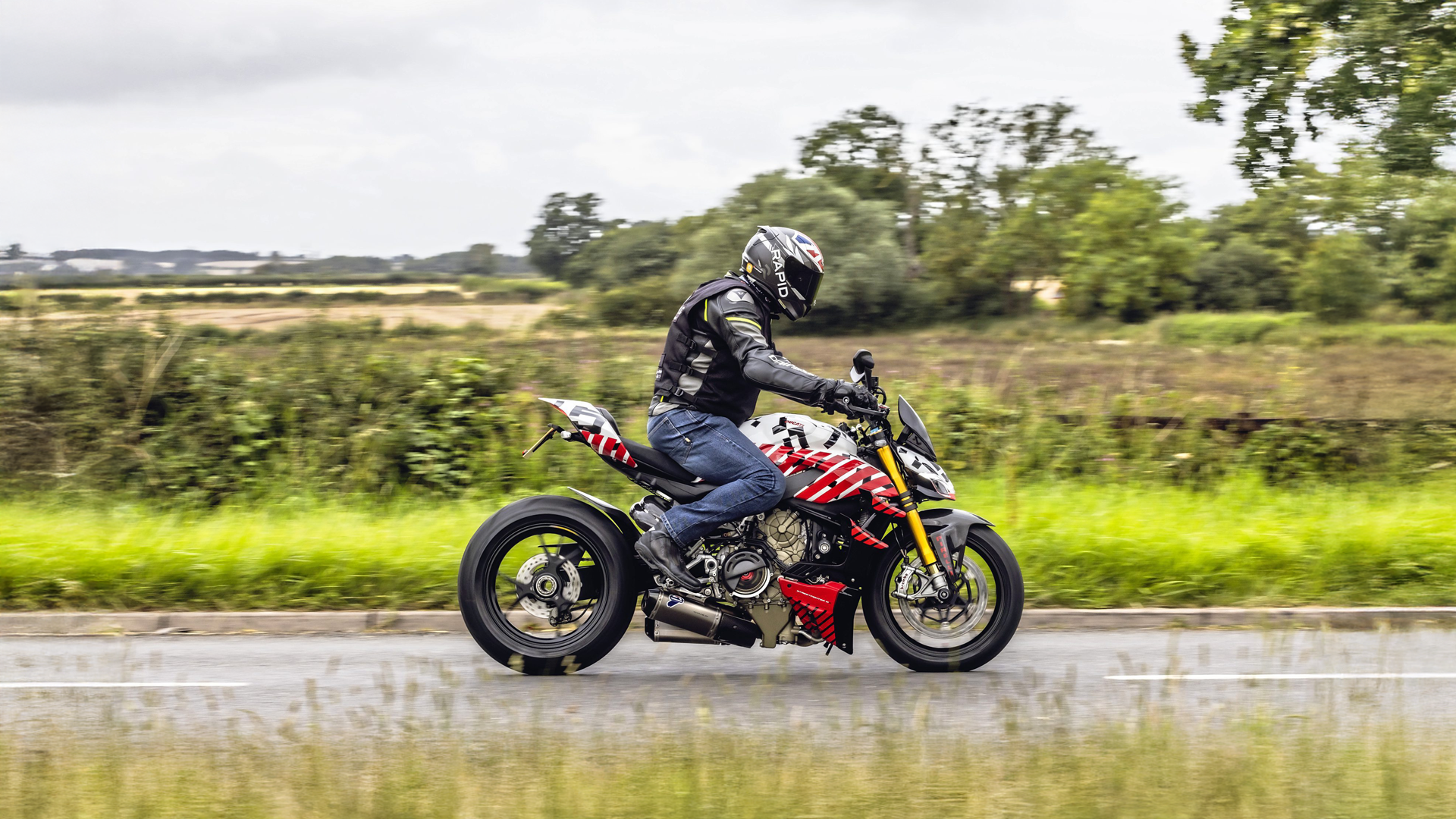
Braking
Maximise your braking control
Your biggest safety aid is your bike’s braking system - learn how to use it
You spend most of your time trying to tune out hard braking, so it does feel odd to be deliberately braking as hard as you can. You might have excellent braking control, but the majority of riders are not aware of how hard their bike is capable of braking, or just how much mechanical grip is available when you brake effectively. This lack of experience means riders will usually under-brake in an emergency - or brake ineffectively through poor technique. Being aware of your surroundings at all times makes it less likely that you will have to perform emergency braking.
Many riders are cautious of the power of their front brakes, and numerous accidents reveal the telltale signs of a rider who braked predominantly, or solely, with their rear brake. Most bikes have two front calipers action on a pair of large discs and a smaller, single-disc set-up at the rear. This indicates that the majority of the braking - around 70% - is provided by your front brakes.
Even in an emergency, apply the brakes progressively, grabbing a handful of will cause the suspension to dive. It’s a three-step process: initial take up of the lever; firmer application as weight is transferred; then bring in the rear.
Gradual application of the front brake causes the weight of the bike to deform the front tyre, increasing the contact patch. It can be easy to lock the rear wheel on non-ABS bikes, so practice getting the balance and pressure right. Proper use of both brakes will maximise your stopping distances and could make all the difference in an emergency. Although you’ll never truly be able to control how you react in a panic-braking situation, by regularly practising proper technique you’ll be able to give yourself the best chance. ABS is also a big boost to safety, especially for emergency braking in slippery conditions.
QUICK TIPS
Maximise grip and stability
With a progressive technique the bike’s stability can be maintained even under very hard braking. Start with the front first, gently pulling the lever to start to transfer weight to the front tyre. Increase the pressure as more weight pivots forward, and apply just enough to the rear to help keep the rear tyre on the ground.
Understanding heavy braking
Violent emergency braking will have a significant impact on your bike’s stability. In panic situations it’s normal that 100% of braking force will come from the front brake, but it’s also common for riders to stamp on the back brake and forget the front altogether. The ideal scenario is a powerful mix of both brakes – which will result in dramatically shorter stopping distances.
Use the systems that are there to help you
To allow you to get used to the sensation of the ABS activating, find a quiet straight stretch of well-surfaced road. Initially, it’s good practice to activate the rear ABS without any front brake, which is very easy. Then build up to activating the front ABS by braking increasingly more aggressively. The system is designed to prevent loss of control, so don’t fear it activating. After a couple of runs, you should be confident enough to really trust the available grip and the ABS. The next stage is to use both brakes together in order to get the maximum effect.
Watch your bum
Whilst braking hard, keep your head up, arms as relaxed as possible and your bum as far back as possible to help balance the bike and maintain maximum grip from your tyres, which will be working very hard at this point.


